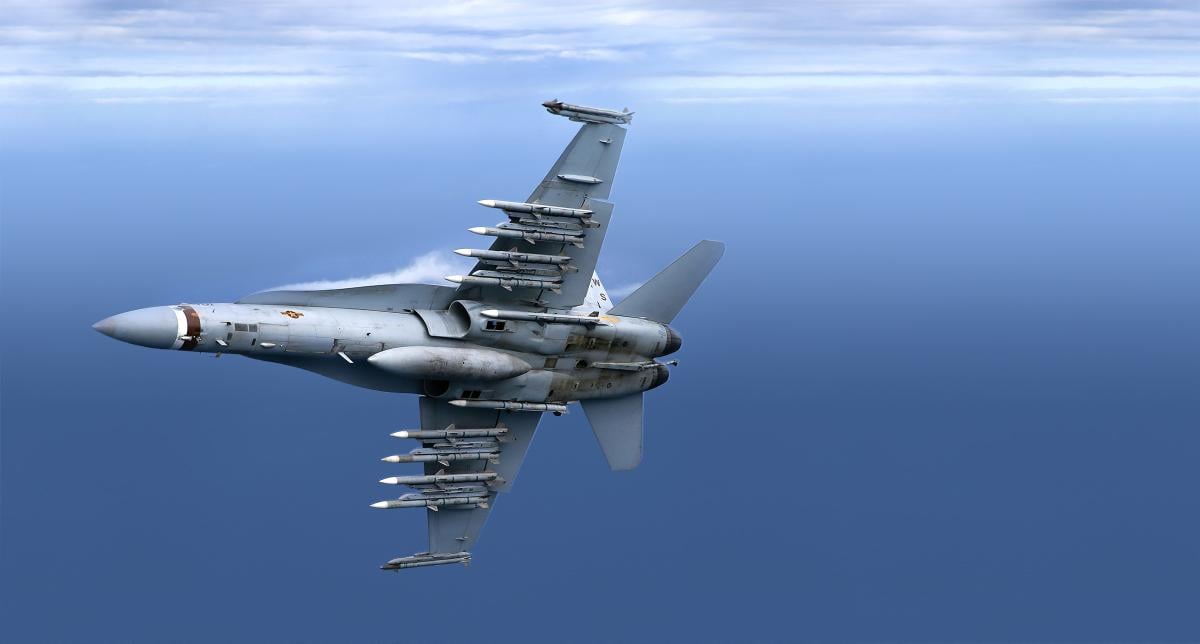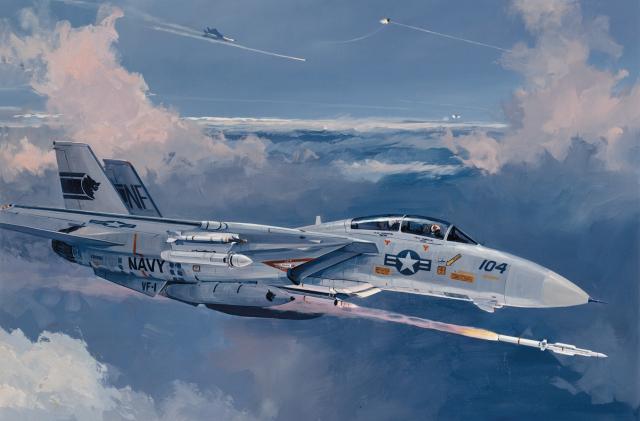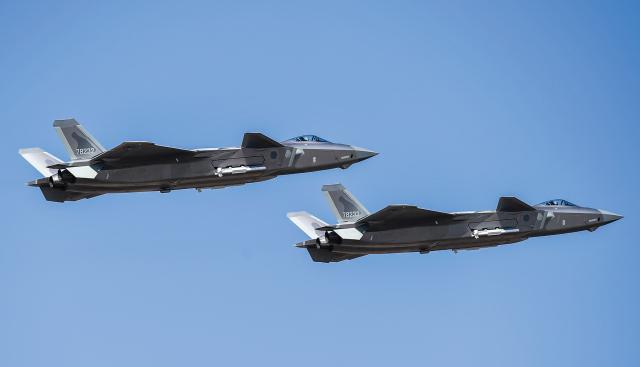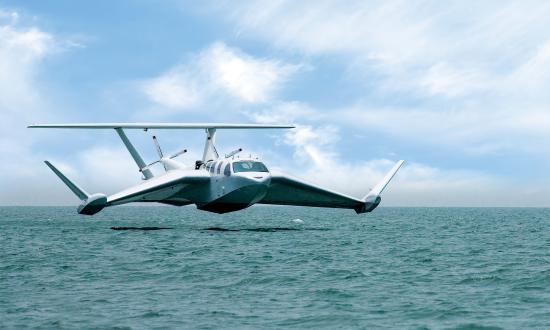Between the 1980s and ᾿90s, much of the fighter/air wing antiair warfare training focused on fighting the “outer-air” battle against a Soviet Union threat. The strategy was to have F-14 Tomcats armed with Phoenix and Sparrow missiles sitting on the threat’s weapon release line, thus forcing enemy units to fight through our F-14s to reach a launch point—i.e., “It’s easier to shoot the archer than his arrows.” This meant keeping long-range fighters armed with long-range missiles fueled and on station for relatively long periods.
Toward this objective, vector logic and chainsaw tactics were developed to optimize employment of U.S. air-to-air missiles, superior in both range and lethality. With the collapse of the Soviet Union in 1991, the long-range threat (along with tactical interest in the outer-air battle) to the carrier battle group all but disappeared.
Today, the People’s Republic of China, with bombers escorted by long-range fighters armed with long-range missiles, and with its antiship missiles, poses as great a threat to the carrier strike group as the Soviet Backfire/Blackjack long-range bomber force did in the 1980s. But because of the requirement to support the war efforts in the Middle East and Afghanistan for the past 19 years, U.S. fighter aviation has failed to keep pace with the development of a long-range air-to-air missile to counter China.
Naval Air-to-Air Missile Development
In fighter weapon-system development, it is always a battle to balance the range requirements between the sensor and the weapon. Through World War II and into the 1950s, the primary fighter sensor was the pilot’s eyesight Mk I eyeball (the human eye) and the primary weapon was the machine gun/cannon. While a pilot could visually track a target at ranges averaging three nautical miles (nm) or greater, the effective range of his guns was a couple of hundred yards. Advantage: sensor.
In the mid- to late-1960s, long-range radar-guided missiles (such as the AIM-7 Sparrow) were under development, resulting in missile flyout capabilities against small radar cross-section targets beginning to exceed sensor (radar) detection and tracking ranges.1 This was true for the F3H Demon and F-8 Crusader. Then came the F-4 Phantom II, which could detect and track a 5-square-meter target at around 35 nm, while the AIM-7 usually was limited to inside a 20-nm launch range.
The F-14 Tomcat introduced a new sensor system capability (AWG-9 weapon system) in the 1970s, with detection and tracking ranges out to 150 nm and multiple target tracking capability. Paired with it was the truly long-range AIM-54 Phoenix missile, with launch ranges exceeding 50 nm—a reasonable match between sensor and weapon
In the mid-1980s, the F/A-18 Hornet became operational, and its primary sensor, the APG-65 radar, was designed to be paired with medium-range missiles—the AIM-7 and the AIM-120 advanced medium-range air-to-air missile (AMRAAM), which at that time was under Air Force development. While the AMRAAM was developed to replace the AIM-7 with its 500-pound, 12-foot, 8-inch airframe, it was constrained in size by the Air Force/European allies’ mandatory requirement for carriage on F-16s. That requirement further determined a maximum 350-pound, 7-inch missile airframe. However, with the development of more powerful propellants, trajectory optimization, and modern guidance processors, the AIM-120 flyout range was increased far beyond that of the AIM-7.
As a result of the decisions on the size of the AMRAAM, the F-22 and subsequently the F-35 were designed with an internal weapons bay configured to accommodate the footprint of the AMRAAM, not the AIM-7.
In the late 1980s, the YAIM-152A advanced air-to-air missile (AAAM) was under development to replace the F-14’s Phoenix missile and alleviate the F/A-18’s reliance on the AIM-7 or AMRAAM for long-range engagements. The missile was to have a flyout range of no less than 150 nm, have both radio-frequency and infrared-tracker capability, weigh no more than 500 pounds, and be deployable from both the F-14 and the F/A-18. By early 1992, two developers—General Dynamics paired with Westinghouse, and Hughes/Raytheon—were ready to fire their first controlled test missile. By that spring, however, the Soviet Union had folded and the AAAM program was canceled, and money and support began to dry up for modernization of the F-14.
In 2006, the Tomcat was fully retired, which left the Navy with the Hornet as its only fleet fighter. The F/A-18’s primary sensor’s maximum range supported the AIM-120 flyout range fairly well, and both were adequate for the air threats at that time, such as those presented by Iran or North Korea.
Current Capabilities
This left the AMRAAM as the only “long-range” missile in the Air Force and Navy fighter inventory from the early 1990s to the present, and it was adequate against Russian-developed sensors and weapons. The primary projected air threat, however, has evolved, with China’s J-20/J-16 fighters armed with PL-15 missiles being described as “near peer.” The PL-15 is a 500-pound missile with an 8-inch airframe, remarkably similar to an AIM-7. Its projected performance is acknowledged to exceed that of the AMRAAM.
On 20 June 2019, Brigadier General Anthony Genatempo, Air Force program executive officer for weapons, said a joint Air Force–Navy program was developing the next generation air dominance missile: the AIM-260 Joint Air Tactical Missile (JATM). As reported in the 1–14 July 2019 issue of Aviation Week & Space Technology, Brigadier General Genatempo said, “What I have going on in air dominance is the AIM-260, or the JATM, which is to counter the PL-15.” The article further states that the missile “shares similar dimensions to the AIM-120 . . . uses no air-breathing propulsion” (ramjet) and is scheduled to achieve initial operational capability in 2022 with the F-22 and F/A-18E/F as the lead aircraft.
With the research and development of integrated, netted sensors, no longer is the fighter pilot limited by what he has on board as a primary or secondary sensor. His targeting range, aided by many combinations of contributors, is approaching over the horizon. Air-to-air missile deployment will no longer be limited to on-board sensor detection and tracking capabilities but by the maximum performance of the air-to-air missile.
Sooner or later, China will either buy or steal the U.S. technology being developed to make an AMRAAM-sized JATM missile fly as far as today’s PL-15, or maybe one of their thousands of U.S.-educated Ph.D.s will develop something even better. They can then incorporate that capability into a 500-pound, 8-inch airframe that will immediately make the AIM-260 obsolete.
To put it in the words of a young Navy lieutenant: “Great. We’re developing today a missile we’ll get sometime tomorrow to defeat yesterday’s threat.”
Here are some recommendations for naval aviation:
1. Acknowledge that the outer-air battle is back.
2. Get out of the mind-set that the United States must develop only one missile to meet all the requirements of a long-range, medium-range, and/or short-range air-dominance missile and that must be compatible with every aircraft type in the Air Force and the Navy/Marine Corps inventories.
3. Go back to the 12-foot, 8-inch, 500-pound airframe of the AIM-7 for future missiles. It can be carried on the F-15 and the F/A-18 today without any degradation to aircraft maneuvering/fighting performance. It can even be carried on the in-board stations of the F-16.
4. Repackage and pack the new missile’s front end with all the capability developed for the AMRAAM and the back end with the most modern propellant. Redesign flight controls to minimize drag and still retain terminal-maneuvering performance.
5. Ensure all future air-dominance fighters have a design requirement to accommodate an AIM-7 sized air-to-air missile both internally and externally.
The outer-air battle is back, and the Navy must have both long-range fighter aircraft and long-range air-to-air missiles that can pace the threat. The Navy can and must do better.
1. Initially, the AIM-7 was considered a long-range missile because it was the longest-range missile in the inventory. When the AIM-54 came into being, the AIM-7, along with its replacement, the AIM-120, was relegated to “medium-range missile.” All were labeled “BVR” or “beyond visual range” missiles, as compared to WVR (within visual range) missiles such as the AIM-9 Sidewinder.






